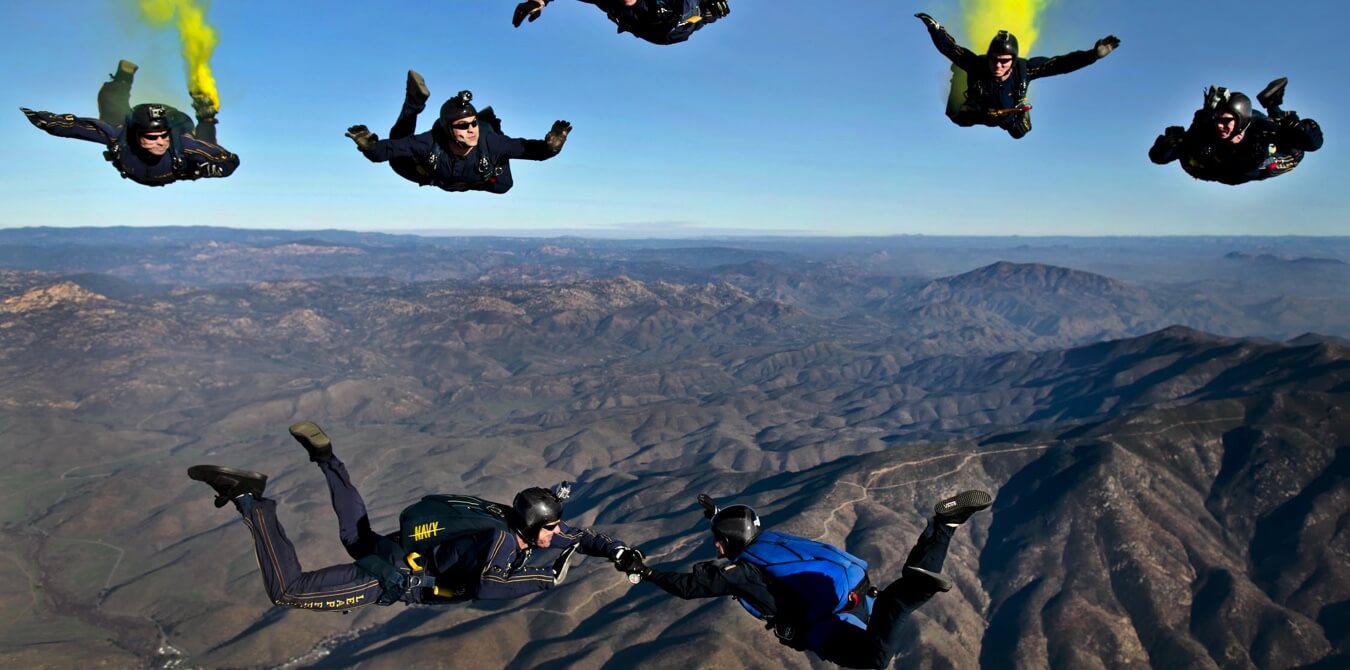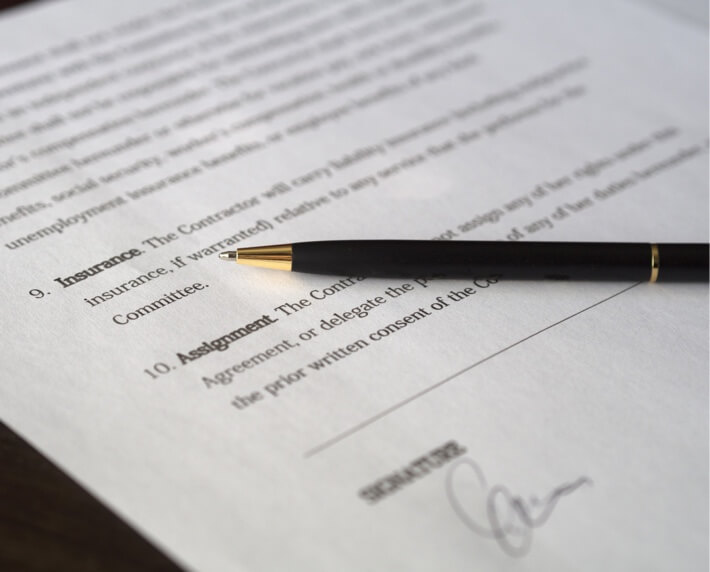Which Jobs And Hobbies Affect Life Insurance Rates?


Reviewed by
Grant Desselle
Licensed Insurance Agent
While exact details will vary from company to company, certain activities that increase your chances of death can cause you to pay more for life insurance or make you uninsurable. Skydiving, scuba diving, aviation, and logging all carry high amounts of risk that some life insurance companies may choose not to cover.
If you engage in hobbies, jobs, or activities considered risky by insurance companies, you’d be right to assume a potentially enormous insurance premium. However, if you’re not an experienced life insurance shopper, you’re likely to overestimate the cost of insurance by a factor of three.
For instance, San Francisco resident Mitchell Fox was quoted a rate nine times more expensive due to his occasional mountaineering, according to an interview with U.S. News and World Report.
Understandably, the 30-year-old didn’t love the prospect of paying a $180 monthly premium:
”It frustrates me that the difference between paying nine times as much per month for insurance was the fact that I was honest on my application about a sport I only infrequently participate in—I’ve climbed three mountains in two years. Am I really nine times riskier a customer than less-active people, whose chances of heart disease are probably higher? Am I really nine times riskier than a bad driver? I don’t recall the question, ‘Are you a good driver?’ on the application.”
Why are risky behaviors make insurance more expensive then?
The calculus on the part of insurance companies is simple: the likelihood of you dying prematurely increases with each risky activity in which you participate. The earlier you pass on, the fewer payments your insurance company can receive.
This counts for existing health risks like high blood pressure, diabetes, and a family history of heart disease as it does for skydiving, scuba diving, and—as Neil Armstrong discovered —spacewalking.
So, which occupations, hobbies, and activities make you a risky bet in the eyes of insurance companies, and what can you do to find the most affordable coverage despite your high-risk status? Read on to find out.
Table of Contents
High-risk jobs
It’s important to note that each insurance company typically has its own methods for establishing the risk factor involved in various occupations. However, it’s most likely they’ll consider the 10 most dangerous jobs according to the number of fatalities experienced by workers in that position.
For reference, the U.S.’ average fatality rate is 3.2 deaths for every 100,000 laborers.
This year’s list of the highest-risk jobs are as follows:
1. Logger
- Risks: Wildlife, falling trees, high winds, chainsaws, terrain
- Fatality rate: 91.3 for every 100,000 laborers
2. Commercial fisher
- Risks: Sun exposure, severe weather, sleep deprivation-related accidents
- Fatality rate: 75 for every 100,000 laborers
3. Aircraft pilot/flight engineer
- Risks: Experimental aircraft failure, chemical exposure, accidents from sleep deprivation, and hazardous flying behavior
- Fatality rate: 50.6 for every 100,000 laborers
4. Roofer
- Risks: Falling accidents, other construction-related injuries
- Fatality rate: 38.7 for every 100,000 laborers
5. Farmer
- Risks: Shares many risks with loggers, in addition to the leading cause of death among farmers: overturned tractors
- Fatality rate: 21.8 for every 100,000 laborers
6. Miner
- Risks: Mine collapse, many others
- Fatality rate: 26.9 for every 100,000 laborers
7. Reuse and recyclable collector
- Risks: Accidents involving heavy and dangerous equipment and jumping off moving vehicles, exposure to chemicals
- Fatality rate: 33 for every 100,000 laborers
8. Truck driver (and other driving-based workers)
- Risks: Traffic and sleep deprivation-related accidents
- Fatality rate: 22 for every 100,000 laborers
9. Electric power line installer/repairer
- Risks: Electrocution and falling accidents
- Fatality rate: 21.5 for every 100,000 laborers
10. Construction worker
- Risks: Electrocution, collapsing scaffolds
- Fatality rate: 17.7 for every 100,000 laborers
You may have noticed that this list doesn’t contain some jobs often thought of as highly dangerous, like firefighting and policing. Many workers in such fields aren’t considered high-risk, though certain positions, like S.W.A.T. officers or smoke-jumpers, are.
High-risk hobbies
 You can work your office job inside of a panic room on the deepest floor of a fallout shelter, but if you engage in any especially adventurous extracurricular activities, expect to pay higher premiums.
You can work your office job inside of a panic room on the deepest floor of a fallout shelter, but if you engage in any especially adventurous extracurricular activities, expect to pay higher premiums.
Which hobbies might incur higher premiums?
Joel Winston, attorney and founder of AnnualMedicalReport.com gave the following estimates for the extra cost—in premiums each year—associated with these seven high-risk hobbies:
- Skydiving/BASE jumping: $2,500 (or may be denied insurance altogether)
- Scuba diving: $2,500
- Hang gliding: $2,000
- Rock climbing: $1,500
- Motorcycle riding: $1,000
- Recreational boating/fishing: $750
- Hunting: $500
Again, each insurer likely calculates risk a little differently. It’s safe to assume that any particularly unusual or hazardous hobby will cost you extra.
Will my insurer find out if I omitted my risky activity?
Penalties for lying or omitting relevant information for your insurance plans—called “material misrepresentation”—can be severe: total plan cancellation, a reduction of your death benefit by the difference between your past and newly-adjusted premium, or application rejection should they discover the discrepancy upfront. Also, if insurers discover misrepresentation after granting you a plan, they may stop coverage or raise your premium. The consequences are most severe if the misrepresentation is discovered after death: they might not payout altogether.
Which begs the question: ‘Will insurers find out if I “mistakenly” forget to tell them about my risky habits?’
It’s impossible to say for certain, but they often do.
Insurers often check social media records and those of your friends about you and look to see if you’ve been treated medically for any risk-related injuries, among many other research methods. Typically, the greater the value of your plan, the more active they’ll be in ensuring you’ve been upfront.
How Insurance Companies Calculate Risk
Insurance companies don’t calculate the risk of the activity simply because you report that you do it. They take into account many factors in how you engage in this activity, like its frequency.
The risk calculation goes even further by asking if you scuba dive professionally—for pay—and, if so, may prompt you with additional questions. Insurance companies may respond to such risk factors with “flat extra” rates, often in the form of an additional $2.50 to $5 for every $1,000 worth of insurance—added to your monthly premiums.
The upside of insurance companies’ typically independent risk-factor assessments means that even those with risky jobs and/or hobbies may find a plan with a price that works—so long as they don’t have serious health issues or other major risk factors.
How to find such a plan? We recommend independent insurance agencies.
Work with independent high-risk life insurance agencies
Shopping around for good life insurance plans to complement your risky activity is, of course, recommended. Still, there’s an entire profession centered around matching clients to appropriate and affordable coverage: independent insurance agencies.
Look for agencies with the following characteristics:
- Small. They give personalized attention to your high-risk needs, writing around 20 applications monthly.
- Specialized. They have relationships with dozens of risk life insurance companies and can find the right one for your high-risk activities.
- Efficient. They make a practice of first sending pre-qualified letters to numerous insurance companies instead of making you take a medical exam for companies that may deny you coverage.
Additionally, you’ll likely be given several different options for the format of your life insurance. Here’s how to consider the likely choices.
A note on group life insurance: affordable but limited
Employers in high-risk fields often offer group life insurance at affordable rates. While it may be tempting to opt for such a plan, the low rates are typically complemented by low payouts (generally between one and three times your salary). They’re often non-transferable, meaning that quitting, getting laid off, or fired could leave you uninsured.
Group insurance is most appropriate for those denied coverage in the past due to one or many high-risk factors.
The life insurance market can confuse and confound even the most healthy and risk-free among us. The surest guiding light towards making the right decision, though, is the same for paragliding miners as it is for stamp-collecting data entry specialists: knowing your priorities for you and your family.
See what you qualify for by answering some health questions.










